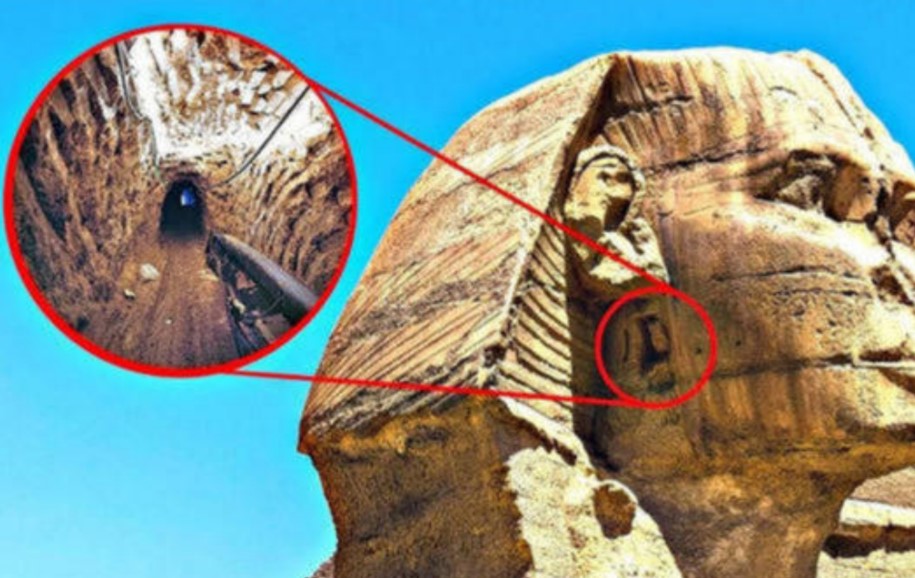The ancient pyramids of Egypt have long been a source of fascination and mystery for historians, archaeologists, and the general public alike. Among these architectural wonders, the 4,600-year-old pyramid of Pharaoh Khufu, also known as the Great Pyramid of Giza, stands as a monumental testament to the ingenuity and spiritual beliefs of the ancient Egyptians. This colossal structure, with its precise engineering and enigmatic chambers, was built not merely as a tomb but as a gateway to the afterlife for the revered Pharaohs.

### The Great Pyramid: A Marvel of Ancient Engineering
The Great Pyramid, constructed during the Fourth Dynasty of Egypt’s Old Kingdom, is the last remaining wonder of the ancient world. Originally standing at 146.6 meters (481 feet), it was the tallest man-made structure for over 3,800 years. The pyramid’s precise alignment with the cardinal points and the incredible accuracy with which it was constructed continue to baffle modern scientists and engineers. Each of the pyramid’s massive limestone blocks, some weighing up to 80 tons, was meticulously placed, showcasing the Egyptians’ remarkable engineering prowess.

### The Pharaohs’ Journey to the Afterlife
For the ancient Egyptians, death was not the end but a transition to the afterlife, a belief deeply rooted in their culture and religion. The pyramids were not just tombs but also served as the pharaoh’s stairway to the heavens. The journey to the afterlife was a perilous one, requiring the deceased to navigate through various trials and tribulations. To assist in this journey, the pharaohs were buried with a wealth of treasures, food, and sacred texts such as the Book of the Dead, which provided the spells and instructions needed to pass through the afterlife’s challenges.

Inside the Great Pyramid, hidden chambers and passageways were designed to protect the pharaoh’s body and his possessions from tomb robbers. The most significant of these is the King’s Chamber, where the pharaoh’s sarcophagus was placed. Above this chamber are a series of smaller rooms, known as relieving chambers, designed to reduce the weight on the King’s Chamber and prevent its collapse. The pyramid’s Grand Gallery, a long, steeply inclined corridor, is thought to symbolize the pharaoh’s ascent to the stars.
### Recent Discoveries and Unveiling Secrets
In recent years, advancements in technology have allowed archaeologists to uncover new secrets hidden within the Great Pyramid. In 2017, a team of scientists using cosmic-ray imaging discovered a previously unknown void above the Grand Gallery. This void, measuring 30 meters (98 feet) in length, has sparked widespread speculation about its purpose, with some suggesting it could be another hidden chamber, possibly containing more treasures or the remains of the pharaoh’s funeral boat, believed to aid in his journey to the afterlife.
Additionally, the use of non-invasive techniques such as 3D mapping and thermal imaging has revealed anomalies within the pyramid’s structure, hinting at the possibility of undiscovered chambers or passageways that could further illuminate our understanding of the burial practices and spiritual beliefs of the ancient Egyptians.
### The Pharaoh’s Afterlife: A Divine Destiny
The ancient Egyptians believed that upon death, the pharaoh would undergo a series of divine transformations, ultimately becoming one with the gods. This process, known as apotheosis, was central to the Egyptians’ concept of kingship. The pharaoh was seen as the intermediary between the gods and the people, and his successful journey to the afterlife was essential not just for his own eternal life but also for the continued prosperity of Egypt.
The pyramid, therefore, was not just a physical structure but a spiritual one, designed to ensure the pharaoh’s safe passage to the afterlife and his continued influence over the mortal realm. The elaborate burial rituals, the careful preservation of the pharaoh’s body through mummification, and the placement of statues and inscriptions within the tomb all served to facilitate this divine transformation.
### Unraveling the Mysteries of the Pyramids
As we continue to explore and study the Great Pyramid and other ancient Egyptian monuments, we uncover more about the sophisticated and deeply spiritual civilization that built them. The 4,600-year-old pyramid of Khufu remains one of the most iconic symbols of ancient Egypt, its mysteries slowly being revealed through modern science and archaeology. Yet, despite all that has been discovered, the pyramids still hold many secrets, waiting to be unraveled.
The journey of the pharaohs to the afterlife is a story of faith, power, and the human desire for immortality. As we delve deeper into the mysteries of the pyramids, we gain not only insights into the ancient Egyptians’ beliefs and practices but also a greater appreciation for the incredible achievements of one of history’s most enigmatic civilizations.

